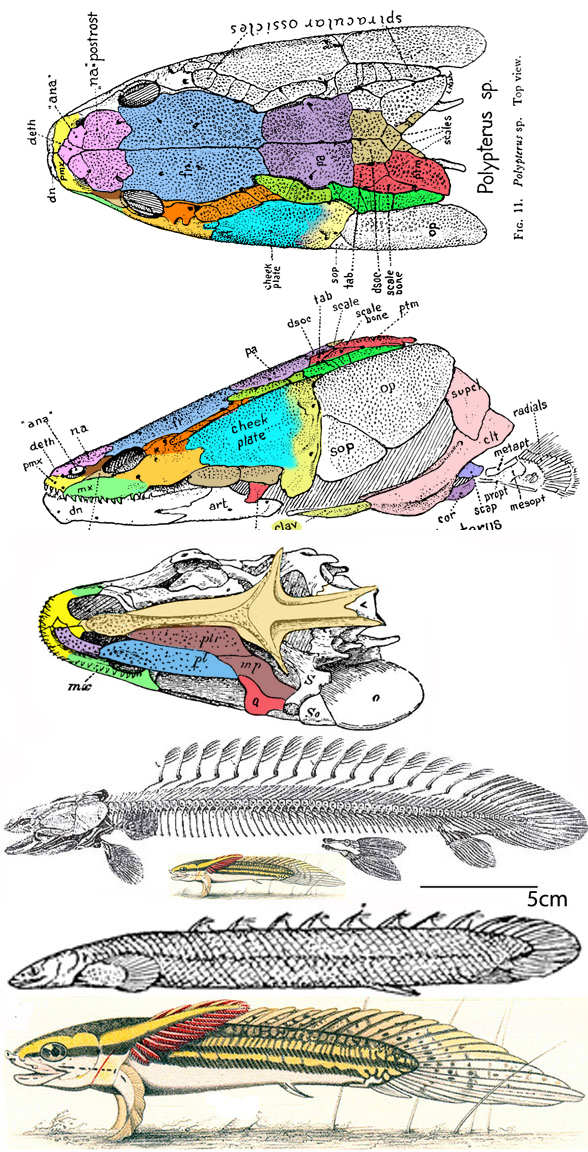Near and Thacker 2024 wrote,
“Classification of the tremendous diversity of ray-finned fishes (Actinopterygii) began with the designation of taxonomic groups on the basis of morphological similarity. Starting in the late 1960s morphological phylogenetics became the basis for the classification of Actinopterygii but failed to resolve many relationships, particularly among lineages within the hyperdiverse Percomorpha.”
The LRT is getting close to resolving all issues involved in fish systematics.
“The introduction of molecular phylogenetics led to a dramatic reconfiguration of actinopterygian phylogeny.
Molecular phylogenetics = genomics. Sometimes genes model evolutionary events. Unfortunately, too often they don’t.
“Here we provide an unranked phylogenetic classification for actinopterygian fishes based on a summary phylogeny of 830 lineages of rayfinned fishes that includes all currently recognized actinopterygian taxonomic families and 287 fossil taxa.
Laudable attempt, but these authors did not dive deep enough to understand that ray-finned fished arose at least three times (sturgeons, conodontomorphs, placodermimorphs). Make that four times if you count paddlefish, as Near and Thacker do.
“We provide phylogenetic definitions for 90 clade names and review seven previously defined names. For each of the 97 clade names, we review the etymology of the clade name, clade species diversity and constituent lineages, clade diagnostic morphological apomorphies, review synonyms, and provide a discussion of the clade’s nomenclatural and systematic history.
None of this is helpful with ingroup and outgroup taxon exclusion present.
“The new classification is free of redundant group names and includes only one new name among the 97 clade names we review and describe, yielding a comprehensive classification that is based explicitly on the phylogeny of ray-finned fishes that has emerged in the 21st century and rests on the foundation of the previous 200 years of research on the systematics of ray-finned fishes.”
This foundation = tradition needs to be revised, according to the LRT, which tests omitted outgroup taxa. Add taxa to test this hypothesis.
Moore and Near 2020b defined the Actinopterygii
“The least inclusive crown clade that contains Polypterus, Acipenser, Psephurus, Lepisosteusosseus, Amia and Perca.”
Two taxa and their last common ancestor usually define a clade. Here six taxa are listed. That led to trouble when compared to the LRT, which invalidates the Actinopterygii. This traditional clade is not a monophyletic clade in the LRT. Add taxa to test this.
In the LRT these taxa are not closely related to each other.
Nor are they all basal clade members. The inclusion of all six taxa also includes sharks and rays, placoderms, conodonts and other jawless taxa. Finless Pharyngolepis is the last common ancestor of these six taxa.
That’s a clade, but it is not the clade Moore and Near 2020b had in mind.

Figure 1. Polypterus is a lungfish relative, not a baal ray-fin fish.
The last common ancestor in Near and Thacker 2024
is the basal lungfish, Polypterus (Fig 1) followed by sturgeons, gars, anchovies, and other unrelated fish in the LRT. This is a traditional sister group of the Actinopterygii in studies that never questioned the monophyly of this clade.
Their citation list runs 62 pages. All for naught given the taxon exclusion present here. That’s the problem from learning rather than testing. Sicience is all about testing.
The LRT doesn’t set out to question any clade,
but the addition of a wide gamut of taxa ultimately lays out the architecture of the entire chordate family tree. Sometimes traditional clades are indeed monophyletic. Sometimes they are not. The value of the LRT is inclusion. Pertinent taxa are not accidentally, traditionally or intentionally omitted in the LRT. Scrappy taxa (= a leg, cervical or mandible) are usually, but not always omitted.
Progress on the fish subset of the LRT continues.
Presently the conodontomorph half the tree is resolved to 3 MPTs. The other half (with common ancestor overlap) is resolved to 4 MPTs. Those are subject to change. Mistakes continue to rise to the surface and scoring improves to match and model actual evolutionary events. Combining the two halves was down to 16 MPTs a week ago, but it is not down that low at present. Far from it. That means convergence between the two clades is a big issue. But not insurmountable. Mistakes in facial bone identity continue to appear. Corrections actually mean progress! This is coming together.
References
Moore JA and Near TJ 2020b. Actinopterygii. In: K. de Queiroz, P. D. Cantino, and J. A. Gauthier, eds. Phylonyms: A Companion to the PhyloCode. Boca Raton, FL: CRC. pp. 695–699.
Near TJ and Thacker CE 2024. Phylogenetic classification of living and fossil ray-finned fishes (Actinopterygii). Peabody Museum of Natural History, Yale University
URL: https://doi.org/10.3374/014.065.0101
